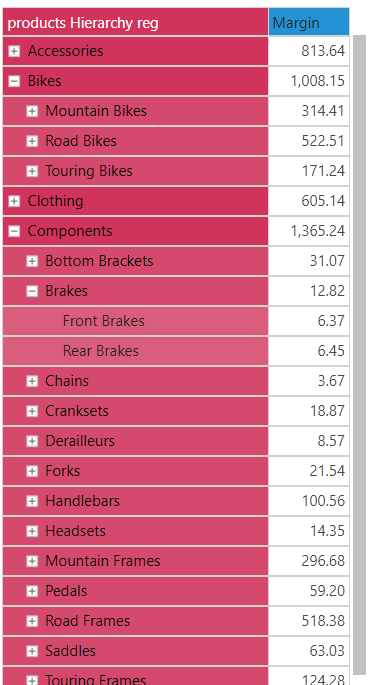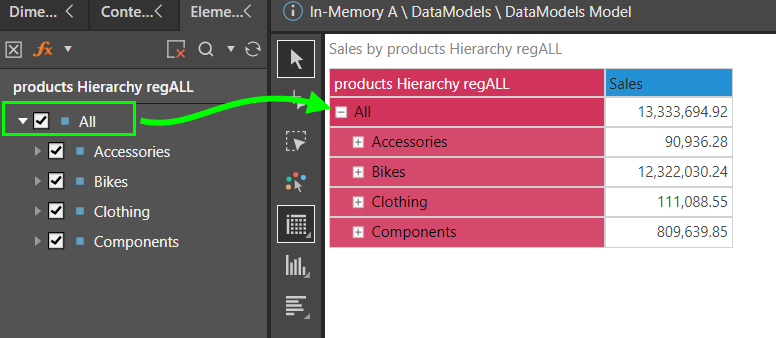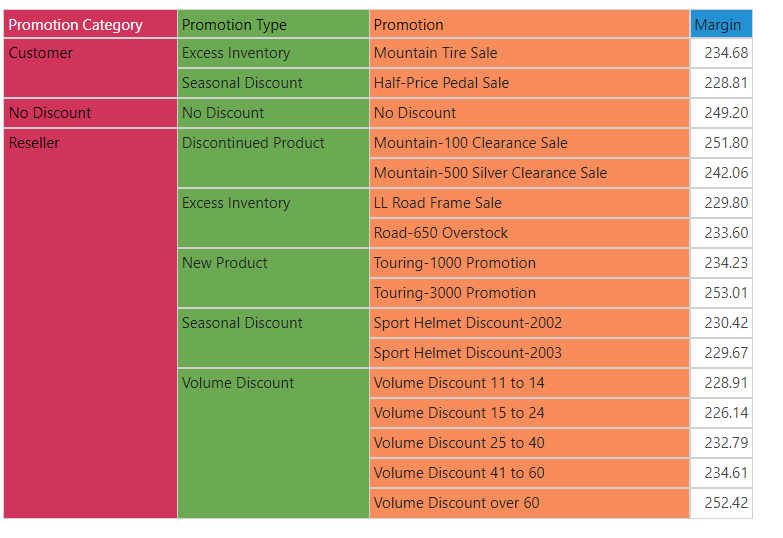Hierarchy Types
Pyramid enables you to build 2 different kinds of hierarchy: regular or drill path. These hierarchies are structurally identical, but behave slightly differently in the query. These differences apply to grid visuals.
- Click here to learn about hierarchy types in Discover.
Regular Hierarchies
This is the default hierarchy type when directly querying MS OLAP, Tabular, and BW models; in this case, regular hierarchies reflect the hierarchical structures configured in the cube. In SQL models, regular hierarchies are constructed by arranging multiple columns in such a way as to facilitate the desired drill path.
Regular hierarchies display expand and collapse buttons in grid visuals in the query, enabling the user to simultaneously show or hide multiple levels of the hierarchy for specified attribute (member).

When utilizing drill functionality, the drill path of a regular hierarchy will be reflected in the Elements panel. You can mange the query from the Elements panel in order to show the multiple levels or children of different attributes.
Regular hierarchies can also have an "All" level added to them; this "All" parent level can then be used to add the entire hierarchy to the query (green highlight below).
- Click here to learn more about regular hierarchies in Discover.

Drill Path Hierarchies
Drill path hierarchies do not display expand and collapse icons on grids, although they do support expand and collapse functionality from the context menu; the expanded levels will be displayed in a new column. In the image below, the hierarchy is made up of three levels: Promotion Category, Promotion Type, and Promotion. Each expanded level is shows as a column:

When drilling into the hierarchy, the query is updated to show only the child members of the selected attribute (member element). The drill-path is reflected in the breadcrumb trail beside the report title, and each selected parent attribute (each attribute into which the user drilled) is added to the query as a background filter.
- Click here to learn more about drill hierarchies in Discover.
